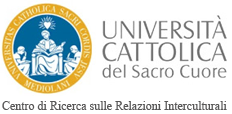
Language, Music, and Culture - Language
 Romani Italian mother and daughter (from Abruzzo) at the Bonfadini Street camp, Milan (Italy). © Alessandro Serranò. |
|
|
Even though the Romani language now comprises a number of different dialects, it belongs to the family of Indo-European languages in a group that includes other languages of Indian origin, such as Hindi and Bengali. |
|
|
The affinity of Indo-European languages is revealed in various terms, such as the Czech bratr, English brother, Sanskrit bhratr, Romany phral (an aspirated p, not an /f/ sound). Romany, however, is far from a unified language. Due to the diaspora of individual groups of Roma, there are a number of main dialects of the Romani language, although Roma from different parts of the world are able to understand one another. On the Romani language, see the Council of Europe's Dosta! awareness-raising campaign: the language of Roma - Romani, what is this exactly? Mustafa D., “Lingue, culture e rappresentazioni”, in Vitale T., "Politiche possibili. Abitare la città con i rom e i sinti", Carocci, Roma, 2009, pp. 30-37. |


